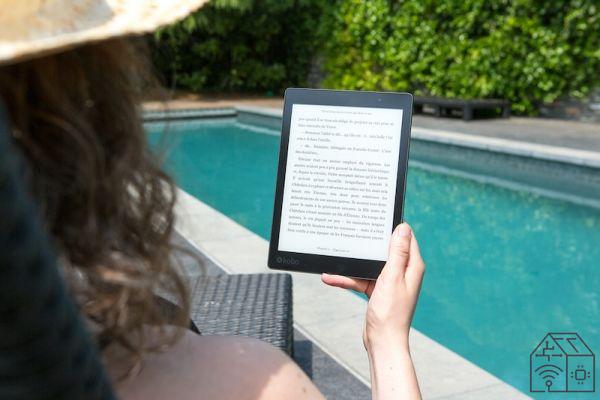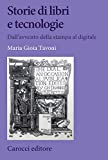
Irreplaceable (and main) tool for disseminating knowledge, how has the book changed over the centuries?
How is knowledge transmitted, transmitted and transmitted in writing?
How has the book changed?
To decide how the book has changed, we must first establish what it is. The common definition of a book is that of a set of sheets of equal size, no matter if printed or handwritten, held together by some kind of binding and enclosed by a cover.
The ancestors of the book
Everything that comes before what corresponds to the definition just given, therefore, is not to be considered a book.
So, in a very quick retrospective, we remember that alphabetic writing originated in Egypt about 3000 years before Christ. And it was first engraved on any material that allowed a certain conservation of the signs (stone, tree bark ...) and then written on the papyri.
During the Bronze Age the clay and wax tablets appeared, later flanked by the scroll, whose constituent materials could be papyrus or parchment.
According to what we read in the Stories of Herodotus, the Phoenicians brought writing (and papyrus) to Greece between the tenth and ninth centuries BC.

It codes
If the scroll has been the main pre-book form for centuries, in late antiquity (i.e. between the third and sixth centuries AD) in the Roman world the codex, or code.
Initially made up of wooden tablets joined together by metal rings or strips of leather, over time it has become a set of sewn and bound sheets. We are on the threshold of the modern book.
The book, finally
If until the second century after Christ the culture was handed down through scrolls, the turning point will take place starting from the fourth century, thanks to the development of Christianity and monasticism.
The monks can be considered the first publishers of books. In each monastery there was a scriptorium, and the task of the copyists was to pass on in writing, with the utmost patience, all possible knowledge. They used a clay inkwell with vegetable ink, a goose feather, a stylus, a wooden ruler, a compass and parchment. Which also allowed you to write on the back of the sheet.
A further impulse to the diffusion of books took place starting from the twelfth century, with the development of universities. The Sorbonne of Paris and the papal library of Avignon, already before the fifteenth century had a patrimony of over two thousand volumes each.
How the book has changed: the press
It's movable type printing, significantly reducing composition times, to give the book an impressive acceleration.
But here a cliché must be dispelled. The inventor of movable type and the printing press is Johannes Gutenberg only for our latitudes. If the discovery of him dates back to 1455, in China Bi Sheng preceded him by 400 years.

From incunabula to lynotype
From the first printed books produced up to 1501, called incunabula, the volumes have spread exponentially. And the book object has become more and more similar to today's one. The current punctuation, page numbering, bibliographic indications have been introduced.
The book has increasingly become a social and commercial phenomenon as well as a cultural one. And its diffusion has a second great acceleration in the nineteenth century, first with the steam printing and then with the lynotype, invented in 1881, used until the advent of computer composition.
How the book changed in the twentieth century
We have arrived at the twentieth century, to the great series that have given their name to literary genres, such as the yellow (from the Giallo Mondadori series), to the book as an instrument of emancipation and claiming equal dignity and rights.
The invention of the paperback, paperback and very cheap, has further spread (and, as far as possible, homogenized) knowledge: classics that until a few centuries earlier were written by hand over the course of months could now be found in newsstands, supermarkets, motorway restaurants, in tobacconists.
Starting from the second half of the twentieth century, anyone with minimal financial resources is able to compose an enviable library.
Discount
 Stories of books and technologies. From the advent of printing to ...
Stories of books and technologies. From the advent of printing to ...
- Tavoni, Maria Gioia (Author)
The book and the digital age
The digital enters with arrogance first in the composition and then in the printing of volumes. Printing books becomes an increasingly faster and less expensive process. Yet, readers who own tomes from even a few decades ago will have noticed how the materials in the books have become increasingly poor. The argument is ancient: quality and quantity are two mutually exclusive variables.
Ma today we are already in the second digital era. The one for which, with the diffusion of eBooks and audio books, we have come to the dematerialization of the book.
At this point, however, we find ourselves at the beginning of our article, when we defined what a book is. Well: digital or audio books are further formats for the dissemination of knowledge, but they are not books, just as papyri were not books.
The books, those sets of pages of equal size, bound and closed in a cover, they will continue to exist and to be more or less always identical to themselves. Some pages will yellow before the others, some others will come unstuck more easily, but the culture will continue to be transmitted mainly through the pages of paper books.




















![[Review] Samsung Powerbot VR7000: the robot vacuum cleaner from Star Wars](/images/posts/6bc44de38605b5c0fa12661febb1f8af-0.jpg)





